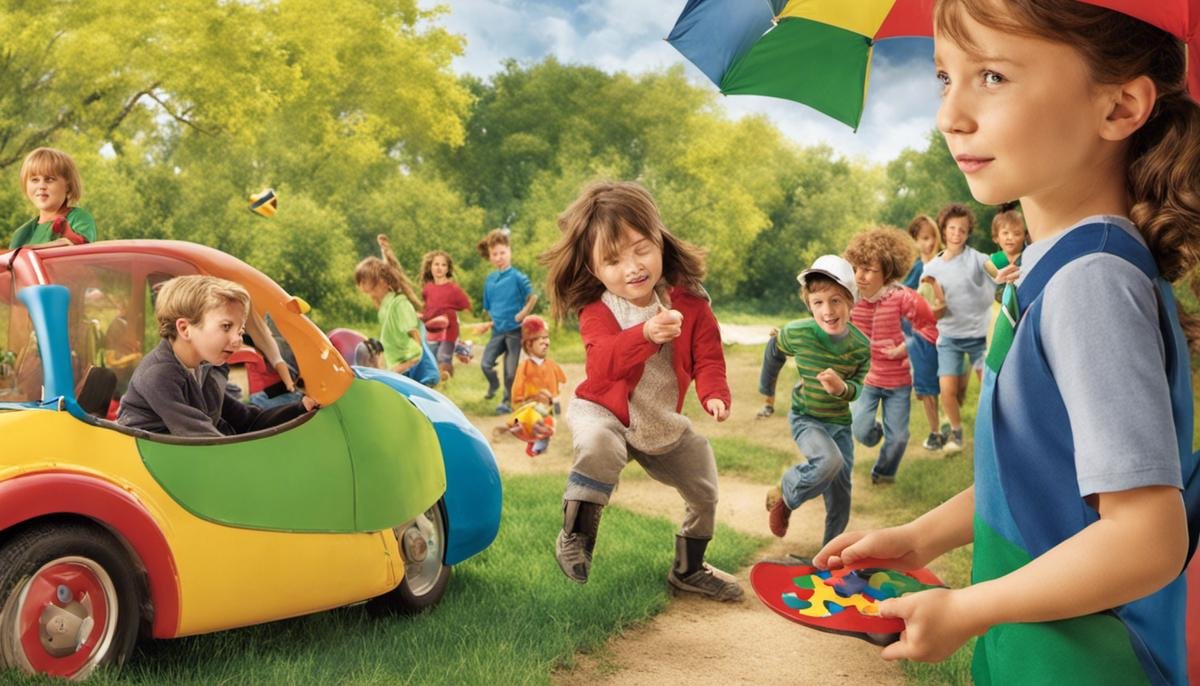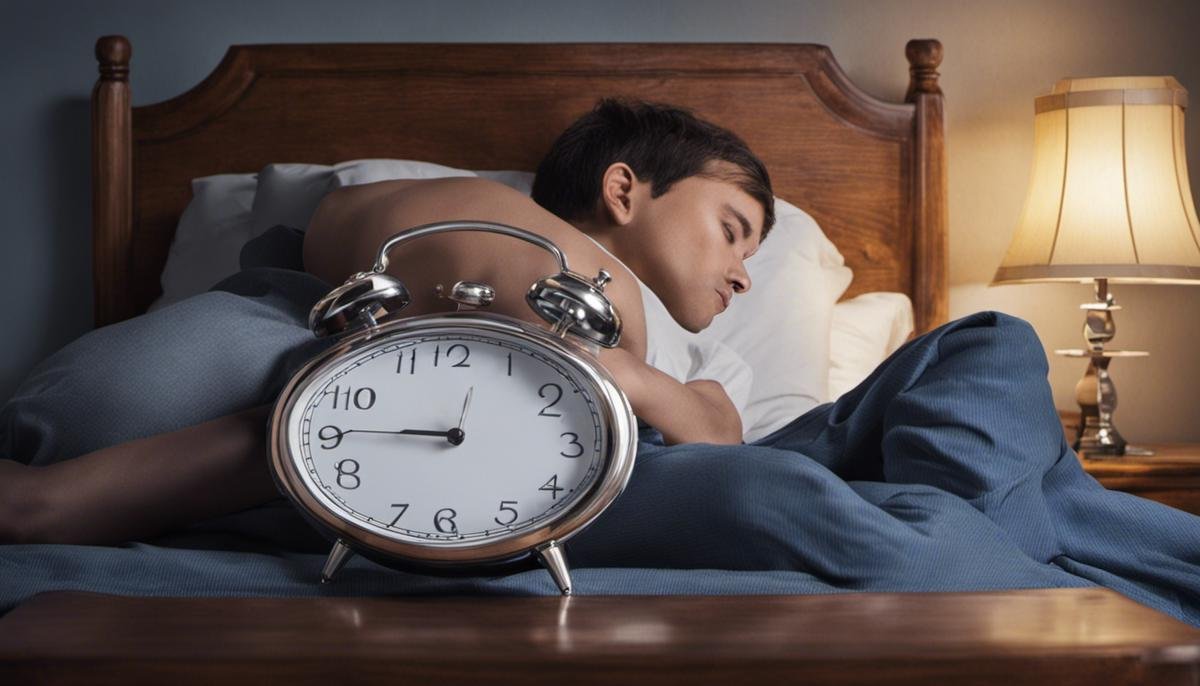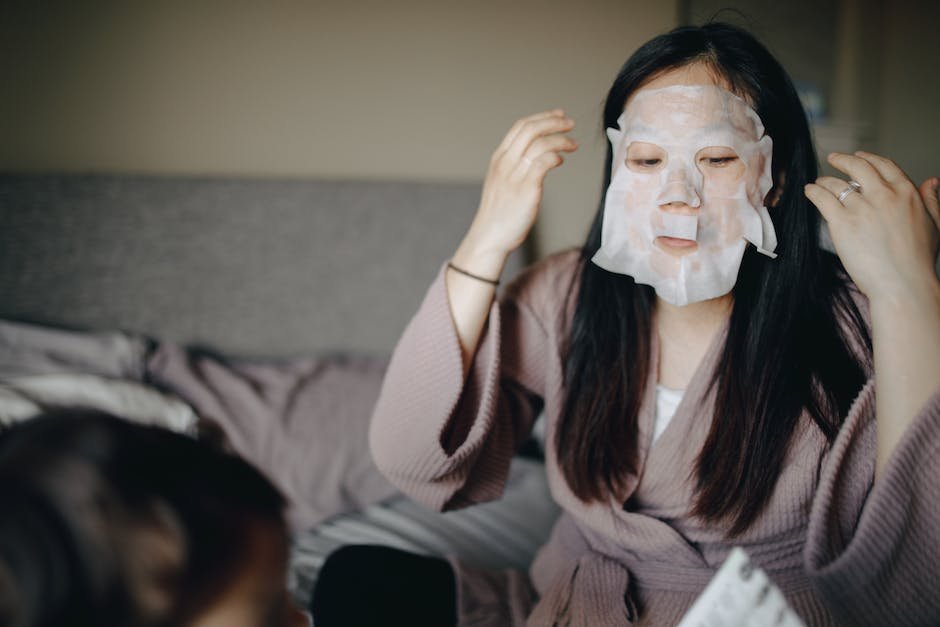
For many, understanding the complex worlds of Autism and Non-24 Sleep Wake Disorder is a journey of endless learning and adaptability. As diverse and multifaceted as the individuals it affects, Autism is a spectrum disorder that presents symptoms differently in every child. Similarly, Non-24 Sleep Wake Disorder, often overlooked yet equally significant, adds another complicated layer to this mix. It not only disrupts the normal sleep cycle but can also profoundly affect physical, mental, and emotional health. By exploring these conditions, their interrelation, and the particular everyday challenges they would pose together, we aim to provide a comprehensive resource that bridges the knowledge gap and offers pragmatic tools to those looking to support loved ones in their journey.
Understanding Autism
Understanding Autism: Key Characteristics That Define Children on the Autism Spectrum
Hello fellow parents, caregivers, and advocates! Parenting is a remarkable journey, and when that journey includes a child on the autism spectrum, it becomes even more fascinating. There’s a world of discovery, opportunities, and learning awaiting all involved, mainly because every child with autism, like all children, is unique.
Autism is a broad term used to describe a collection of neurodevelopment disorders, characterized by difficulties with communication and social interaction, along with repetitive and restricted patterns of behavior or interests. While the autism spectrum is expansive, there are key characteristics that can help define children on this spectrum.
- Communication Challenges: One common trait among children on the autism spectrum is difficulty with verbal and non-verbal communication. This may include delayed language development, trouble maintaining or initiating a conversation, and challenges understanding social cues such as eye contact, facial expressions, and gestures.
- Social Interaction Difficulties: Children with autism often find it hard to understand and interpret both verbal and non-verbal signals, making social interaction challenging. They might struggle with forming friendships and expressing empathy or understanding other people’s feelings and perspectives.
- Repetitive Behaviors: Individuals on the autism spectrum might display repetitive behaviors, such as hand flapping, rocking, spinning, or lining up items. These behaviors, often termed as ‘stimming’, can be soothing for them and provide a means of self-regulation.
- Resistance to Changes: Children with autism often prefer routines and may resist change. They like familiarity and predictability and may be distressed if their everyday routine is disrupted.
- Unique Strengths and Interests: While autism comes with its share of challenges, it is also associated with unique strengths. Children on the autism spectrum may excel in certain areas such as maths, art, or memory tasks. They may also have intense interests, often narrowed down to particular topics.
- Sensory Sensitivity: Many children on the autism spectrum have heightened or reduced sensitivity to certain sensory stimuli. They may be over-sensitive to sounds, lights, or touch, or show less response to these stimuli compared to other children.
In navigating through these characteristics, it’s essential to understand that no two children with autism will be exactly alike. Each child’s profile will depend on the severity of symptoms, developmental level, and chronological age, amongst other factors. It’s this uniqueness that makes them the extraordinary individuals that they are.
Being a parent or caregiver to a child on the autism spectrum is a profound, transformative experience. It requires an abundance of patience, love, and resilience while also mastering the joyful art of celebrating small victories and unique personalities. And above all, remember that every child has their own strengths and abilities, regardless of where they fall on the spectrum.

Introduction to Non-24 Sleep Wake Disorder
Understanding Non-24 Sleep-Wake Disorder and its Impact on Daily Life
Non-24-Hour Sleep-Wake Disorder (Non-24), while rare, yet steadily gaining recognition in the global health platform, is a serious chronic circadian rhythm sleep disorder. This condition disrupts a person’s natural sleep-wake patterns, leading to a cycle that extends beyond the typical 24-hour day. With Non-24, one’s internal clock doesn’t align with the average day-night schedule, which can cause significant distress and daily life disruption.
Non-24 primarily affects totally blind individuals, because of the inability to perceive light, a key factor in regulating sleep cycles. However, sighted people may also experience it, though rarely. Understanding the specifics of Non-24 and the toll it can take on individuals’ daily lives is essential for fostering empathy, awareness and providing support.
One of the major implications of Non-24 is the resulting sleep deprivation, which often leads to cognitive impairment. This can manifest as difficulty concentrating, memory problems, and slower response times, making it challenging for individuals with this sleep disorder to keep up with daily tasks or fulfill professional obligations.
Imagine preparing a hearty breakfast and packing the school lunches, only to realize mid-task that you’ve forgotten the eggs on the stove or left out a crucial ingredient in your child’s special lunch treat. Or, imagine trying to focus on a work presentation when all your body craves is the comfort of your bed. This is the everyday reality for people with Non-24.
The disjointed body clock also often leads to increased nocturnal alertness, resulting in what is termed “night-time wakefulness.” For families, this could mean the affected family member might be awake and active while everybody else is deep in their dreamland. This nocturnal shift could disrupt the harmony of shared family spaces and limit daytime interactions.
Another crucial aspect to explore is the impact on emotional wellbeing. Studies suggest an association between Non-24 and emotional distress, including feelings of anxiety and depression. Imagine feeling perpetually out of sync with the world around you – that can take a serious toll on one’s mental health.
In a world that operates largely around the 24-hour light-dark cycle, managing daily routines with Non-24 can be a challenge. Regular daily activities like grocery shopping, taking children to school, or even enjoying a day out at the park can become increasingly tough to plan and execute. Responsibilities that need a stable routine may become considerably complicated.
Clearly understanding Non-24, and the not-so-obvious obstacles it presents, is crucial in providing the necessary support and adjustments for affected persons to lead fulfilling lives. Let’s remember that patience, flexibility, and understanding are the cornerstones of making any relationship or family situation work, and they’re needed in spades when treading the non-traditional path of Non-24. Let’s join together in spreading awareness about this sleep disorder to support, in whatever little way we can, those battling Non-24.

Correlation between Autism and Non-24 Sleep Wake Disorder
Autism is known for a spectrum of symptoms and unique strengths, including communication challenges and social interaction difficulties. Another facet often overlooked is that people with autism frequently struggle with sleep disorders, the most intricate of these being Non-24-Hour Sleep-Wake Disorder (Non-24). A full understanding of the interplay between autism and Non-24 provides a critical tool for parents and caregivers striving to support individiuals dealing with these conditions.
Studies reveal a surprising link between autism and Non-24. Autism tends to come with increased incidences of sleep disturbances due to a variety of factors, one of which includes irregularities in the perception of light. This inability can manifest itself in Non-24, a sleep disorder most prevalent amongst fully blind individuals. The disruption of the sleep-wake rhythm caused by Non-24 and the consequential deprivation of sleep often contributes to an increase in autism’s characteristically repetitive behaviors and the intensification of resistance to change.
Non-24 in autistic individuals may not only exacerbate already existing behavioral and emotional distress, but its impact can extend further, causing cognitive impairments. Each cycle of day and night can turn into a roller coaster, leaving affected individuals and their caregivers grappling with fluctuating bouts of night-time wakefulness, daytime sleepiness, and increased nocturnal alertness. As a result, these individuals could face tremendous difficulties with daily tasks and professional obligations.
Moreover, the effect of Non-24 extends beyond the individual and can disrupt family dynamics and daytime interactions. Parents and caregivers often bear the brunt of these disruptions, from adjusting daily routines to managing the additional stress brought about by the disorder. Balancing the needs of a child with autism and Non-24 with the regular activities of family life requires patience, flexibility and understanding.
Research into the connection between autism and Non-24 is ongoing, but there is no denying the significant impact this sleep disorder can have on those living with autism and their families. Understanding the relationship between the two provides a better context for parents and caregivers to navigate potential issues, manage their expectations, and equip themselves with the knowledge needed to support their loved ones.
There’s no one-size-fits-all approach to dealing with Non-24 in individuals with autism. Each person’s condition will manifest differently and require a uniquely tailored approach. The key lies in the willingness to learn, adapt, and provide unending support. After all, in a world where both conditions meet, love, understanding, and patience remain the best parenting accessories.

Parenting a Child with Autism and Non-24 Sleep Wake Disorder
Building a Supportive Environment for Children with Non-24 Sleep Wake Disorder and Autism
Navigating parental responsibilities is often a challenging voyage, but when your child has both Autism and Non-24 Sleep Wake Disorder, the parenting trek can become even more complex. As much as it is crucial to comprehend each condition individually, it’s equally vital to understand how these two conditions co-exist and their overall impact on a child’s wellbeing.
Mindful Parenting Techniques
Autism with Non-24 Sleep Wake Disorder requires a unique set of parenting techniques tailored to provide special care and support. A mindful, constructive approach can lead to rewarding journeys of shared love, growth, and understanding. Here are some helpful hints.
- Encourage a Routine: While a rigid schedule can be frustrating for a child with Non-24, a loose routine can provide stability. Casual consistency can create a sense of comfort without enforcing intensively strict timeframes.
- Light Therapy: For some children, light therapy may be a beneficial way to help regulate their sleep-wake cycle. Exposure to bright light within an hour after waking up in the morning can help ‘reset’ the body’s internal clock.
- Medication Considerations: In close cooperation with a medical professional, certain medications can help align the child’s sleep-wake cycle with societal norms, minimizing the disorder’s overall impact. It’s important to recognize that every child is unique and may respond differently to medication.
- Environmental Adjustments: Noise or temperature can significantly affect sleep quality for a child with Autism and Non-24. Consider enhancing the child’s sleep environment by employing noise-cancelling devices, blackout curtains, and regulating bedroom temperature.
- Comprehensive Support network: Build a reliable support network around your child. Family, teachers, therapists, and healthcare professionals can all play a pivotal role in your child’s journey.
- Education and Advocacy: Ensure that people involved in your child’s life, including teachers and family members, understand the dual-diagnosis of Autism and Non-24. Educate them about the challenges your child faces daily, which will foster empathy and offer more effective ways for them to navigate interactions.
- Sleep Diary: Keeping track of your child’s erratic sleep patterns can provide valuable insight. With this information, you can better predict ‘good’ and ‘bad’ days and gear your activities and expectations accordingly.
- Resilience: Parenting a child suffering from Autism and Non-24 demands a great deal of resilience. There will be days of difficulty and heartbreak, but remember that the bond between you and your child, built on love and understanding is impenetrabably strong.
Being a parent to a child suffering from Autism and Non-24 Sleep Wake Disorder can seem enigmatic and overwhelming. Nonetheless, with a compassionate approach, useful resources, and a supportive community, you can provide your child with a loving, nurturing environment where they can flourish despite these challenges. We can’t always control our children’s circumstances, but we can unquestionably control our response. The biggest gift we can give our children is empathy, patience, and unwavering support.

Community Support and Resources
Taking care of loved ones, especially those with conditions such as autism and Non-24 Sleep Wake Disorder, can be challenging. However, with the right resources and a supportive community, navigating life’s hurdles becomes more manageable. There are numerous resources, both online and local, that can offer families assistance on this journey.
Autism and Non-24 community support range from professional therapy and counseling services to online support forums and local meetup groups. For instance, websites like Autism Speaks and National Autism Association provide autism-specific information and resources, including guidance on managing indicators of non-24 disorders in those with autism. They also promote family services and local community outreach initiatives for suitable therapies, early intervention programs, and social networking groups.
Furthermore, Sleep Foundation and American Sleep Association provide resources specifically catering to those dealing with sleep disorders like Non-24. Webinars, articles, and research publications are often available on these platforms, guiding families on effective management techniques and new research in the field.
Non-profit organizations such as the ARC and local Autism Society chapters also offer direct services that include personal advocacy and support systems for those living with autism and related sleep disorders. These often include support groups that can help parents cope, share advice, and provide reassurances that they’re not alone on this path.
Another important resource is the school system. Many schools have special education programs and trained staff who can offer expert advice and assistance. Furthermore, they may also provide resources for psycho-educational testing to help you better understand and meet your child’s needs.
Hospitals and clinics offer varying levels of support too. Many have social workers and therapists on staff who can provide direct therapy and counseling. They may also guide families towards relevant support groups and community resources. Occupational therapists can often help develop management strategies for dealing with sensory sensitivity and repetitive behaviors associated with autism.
Public libraries are also a hidden gem of resources. In addition to books and research materials, many libraries hold events, workshops, and speakers on various topics, including autism and Non-24 disorders. They may also have connections with local autism groups and can direct you towards local resources.
Navigating the challenges of autism and Non-24 Sleep Wake Disorder can be difficult, but it is comforting to know that there are resources, support networks, and communities available to help. From Autism Speaks to the local library, countless tools and teams are ready to lend a hand. In this shared journey, it is the connections with others, and the wisdom gained from them, that make the complex situations feel less overwhelming. After all, we are all in this together.
Don’t be afraid to reach out and take advantage of these resources, whether that’s attending a local meet-up group, speaking to your child’s therapist, or simply reading an article on sleep disorders online. Every bit of information, every shared experience, brings a bit more understanding, adds a brick to the bridge we’re building to a future full of understanding and acceptance. So, families dealing with autism and Non-24 disorders, reach out and connect – you’re never alone.

Personal Stories and Experiences
The real-life experiences of families contending with both autism and Non-24 Sleep Wake Disorder are marked by a journey of discovery, adaptation, and resilience. As a relative or caregiver, one may experience unique challenges, as well as inspiring victories, that come with navigating these dual conditions.
In order to manage these unique challenges, a robust toolkit of strategies is needed, and families are often found creating their own mix of adaptive tactics. Essential to this toolkit are established therapies, innovative technologies, and the tenacity to keep going even when the path seems uncertain.
Navigating the healthcare system can be daunting, but fortunately, there are resources specifically tailored for families facing this dual diagnosis. Organizations such as National Institute of Mental Health, Autism Sleeps, and Circadian Sleep Disorders Network offer valuable insights and tools that help families connect with healthcare providers, understand different therapies, and implement changes in the daily routine.
Moreover, families often find solace in connecting with others who are on similar journeys. Through both online and local communities, parents and siblings can share experiences, gain advice, and realize that they are not alone in their struggles. Interactive platforms such as Circle of Moms and Wrong Planet provide a safe and welcoming space for thought-provoking discussions, valuable advice and, importantly, a sense of solidarity.
Balance is an essential aspect in managing these dual conditions. A healthy prioritization of one’s own needs, alongside those of the individual with autism and Non-24, enables families to sustain the care they give. This includes taking the time for self-care, maintaining relationships outside the caregiving role, and remembering to celebrate the family’s progress.
Respite care services, such as those provided by the ARCH National Respite Network and Resource Center, can provide occasional relief for family caregivers. This short-term relief not only allows caregivers to rest and recharge but is often beneficial for the child as well, providing an opportunity for socialization and new experiences.
The golden thread weaving all these resources and practices together is consistent, loving support. Dealing with autism and Non-24 Sleep Wake Disorder can be a rollercoaster ride of highs and lows, but the consistent love and support from family members and the wider community play a crucial role in helping the individual cope and thrive.
In conclusion, while the journey of managing autism and Non-24 can be challenging, there is a world of support and resources available. It is a journey of resilience, patience, and adaptability that is far from a solitary endeavor. At the heart of it, families become bridges of understanding, pillars of support, and beacons in guiding their loved ones towards achieving remarkable strides in their unique journeys.

As has been discussed, navigating the landscapes of Autism and Non-24 Sleep Wake Disorder is a tapestry of complexities, but it is also an inspiring testament to human endurance and adaptability. It’s essential to remember that each journey is unique, paved with its own set of triumphs and struggles. While medical expertise and therapy are crucial, the support poured in from various corners of community and family can profoundly impact the journey. Resources and community support provide critical lifelines in the form of advice, emotional backing, and financial aid. Lastly, the beautiful narratives we have shared with you serve as profound reminders that love, resilience, and understanding are the finest medicines we have in face of trial. They are emblems of strength, shedding a comforting light on the path that many others tread, assuring them that they are not alone.




